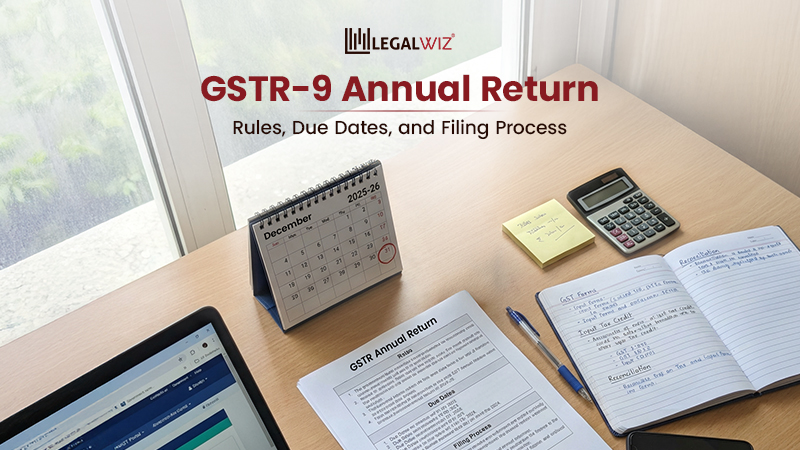What is Form 26Q and who needs to file it?
Introduction
When it comes to financial transactions, the taxman is always involved. In cases where payments are made that aren’t salaries, the payer is required to deduct Tax Deducted at Source (TDS). Form 26Q is the tool used to report these deductions. So, what is Form 26Q, and who needs to file it? What is its relevance for TDS returns? Let’s dive into the details of this crucial taxation document.
TDS Form 26Q – Non-Salary Deductions
Form 26Q is the statement for TDS on payments other than salary. This form needs to be submitted on a quarterly basis, summarizing the total amount paid during the quarter and the corresponding TDS deductions. It covers various sections of payments, such as interest on securities, dividends, winnings from lotteries, payments to contractors, insurance commissions, and more.
Things to keep in mind to Download and Fill Form 26Q Correctly
Understanding how to correctly download and fill Form 26Q is crucial to ensure accurate tax reporting and compliance. So, let’s go through the process step by step to help you navigate this essential task.
Downloading Form 26Q
Downloading Form 26Q is a straightforward process. You can find the form on official government websites or through authorized service providers. It’s vital to ensure you have the correct and latest version of the form to avoid errors during submission:
- Official Sources: To access the correct and latest version of Form 26Q, visit official government websites or authorized service providers. This ensures you have the most accurate and up-to-date form.
- Select the Relevant Assessment Year: Choose the assessment year for which you need to file Form 26Q. Make sure you select the appropriate year to avoid any mistakes.
- Download the Form: Locate the download link for Form 26Q on the website. Usually, it will be available in a PDF format. Click the link to initiate the download.
Filling Out Form 26Q
- Enter Deductor Details: Firstly, start by providing your details as the deductor. Such as your name, PAN, TAN, and contact information. Ensure that this information is accurate and matches official records.
- Add Deductee Information: After that, enter the details of the deductees (the individuals or entities from whom you deducted TDS). Include their name, PAN, and address.
- Report Payment and Deduction Details: In the relevant sections, report the payment details for which TDS was deducted. Make sure to include all the relevant information, such as the type of payment, the amount paid, and the corresponding TDS deduction.
- Section-wise Details: Depending on the type of payment, refer to the relevant sections mentioned earlier in the article. Fill in the specific details for each type of payment accurately.
- Verification: Before submitting the form, carefully review all the entered information. Ensure that PAN numbers, payment details, and TDS deductions are accurate.
- Challan Details: Include the BSR code, date of payment, and total payment details in the annexure.
- Reasons for Lower Deduction or Non-Deduction: If applicable, then provide reasons for deducting TDS at a lower rate or not deducting it at all.
- Generate and Verify Form-27A: Finally, after filling out the form, generate Form-27A, which is a control chart for quarterly TDS returns. Ensure that this form is accurate and complete.
Form 26Q TDS Return Due Dates
Remembering due dates is crucial to avoid penalties. For Form 26Q, the due dates are as follows:
- April to June: Due by 31st July
- July to September: Due by 31st October
- October to December: Due by 31st January
- January to March: Due by 31st May
Penalty for Late Filing
Late filing comes with its share of penalties. Under section 234E, a fine of Rs. 200 per day is levied until the return is filed. Additionally, under section 271H, the Assessing Officer can impose a penalty ranging from Rs. 10,000 to Rs. 1,00,000. However, if certain conditions are met, penalties might be waived.
Rate of Interest
If TDS is not deducted, the rate of interest is 1% per month, calculated from the due date of deduction to the actual deduction date.
Conclusion
In conclusion, understanding what Form 26Q is and its significance is crucial for individuals and entities involved in financial transactions subject to TDS. By following the guidelines, downloading the form correctly, and filing within the due dates, you can ensure a smooth and hassle-free process that keeps you on the right side of tax regulations.
Frequently Asked Questions
Who needs to file Form 26Q?
Anyone making payments that require TDS deductions, other than salary payments, needs to file Form 26Q.
Can I download Form 26Q from any website?
No, it’s advisable to download Form 26Q from official government websites or authorized service providers to ensure you have the correct version.
What happens if I miss the due date for Form 26Q filing?
Missing the due date can result in penalties under section 234E and section 271H. Timely filing is essential to avoid these consequences.
Is there a grace period for Form 26Q filing?
Generally, there’s no grace period. It’s best to adhere to the due dates to avoid penalties.

Monjima Ghosh
Monjima is a lawyer and a professional content writer at LegalWiz.in. She has a keen interest in Legal technology & Legal design, and believes that content makes the world go round.







